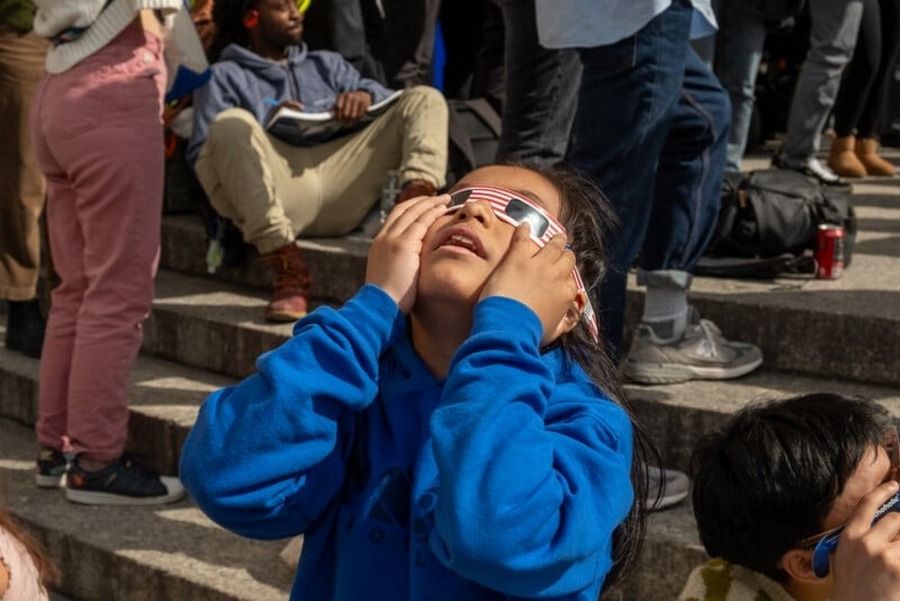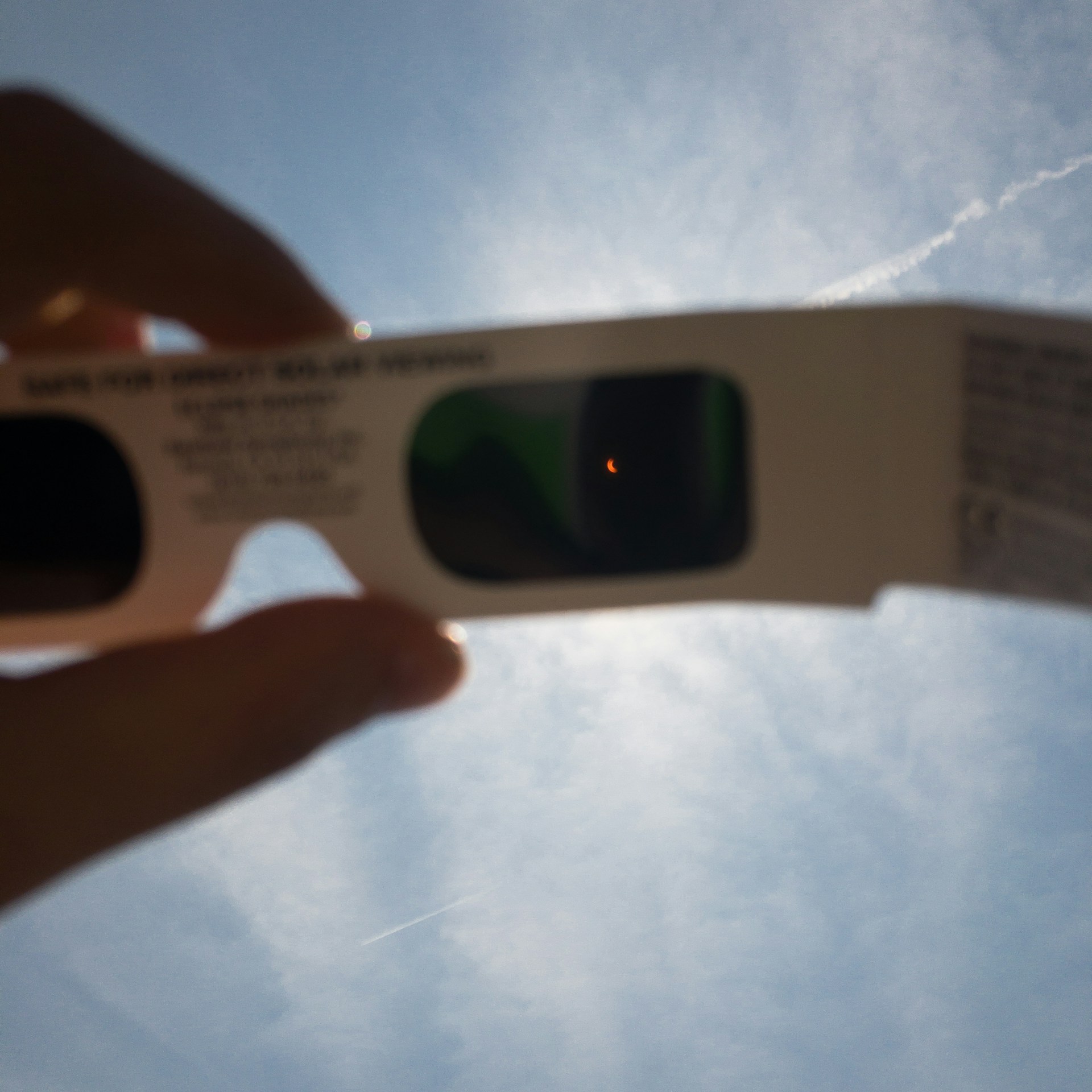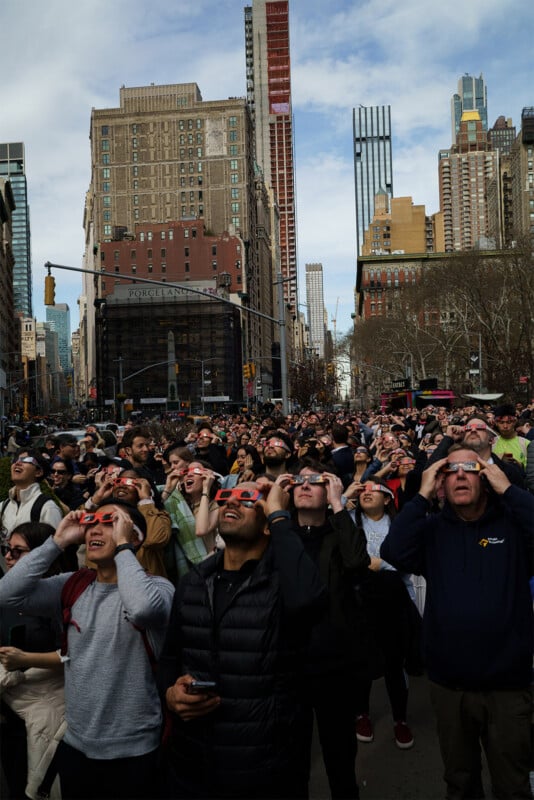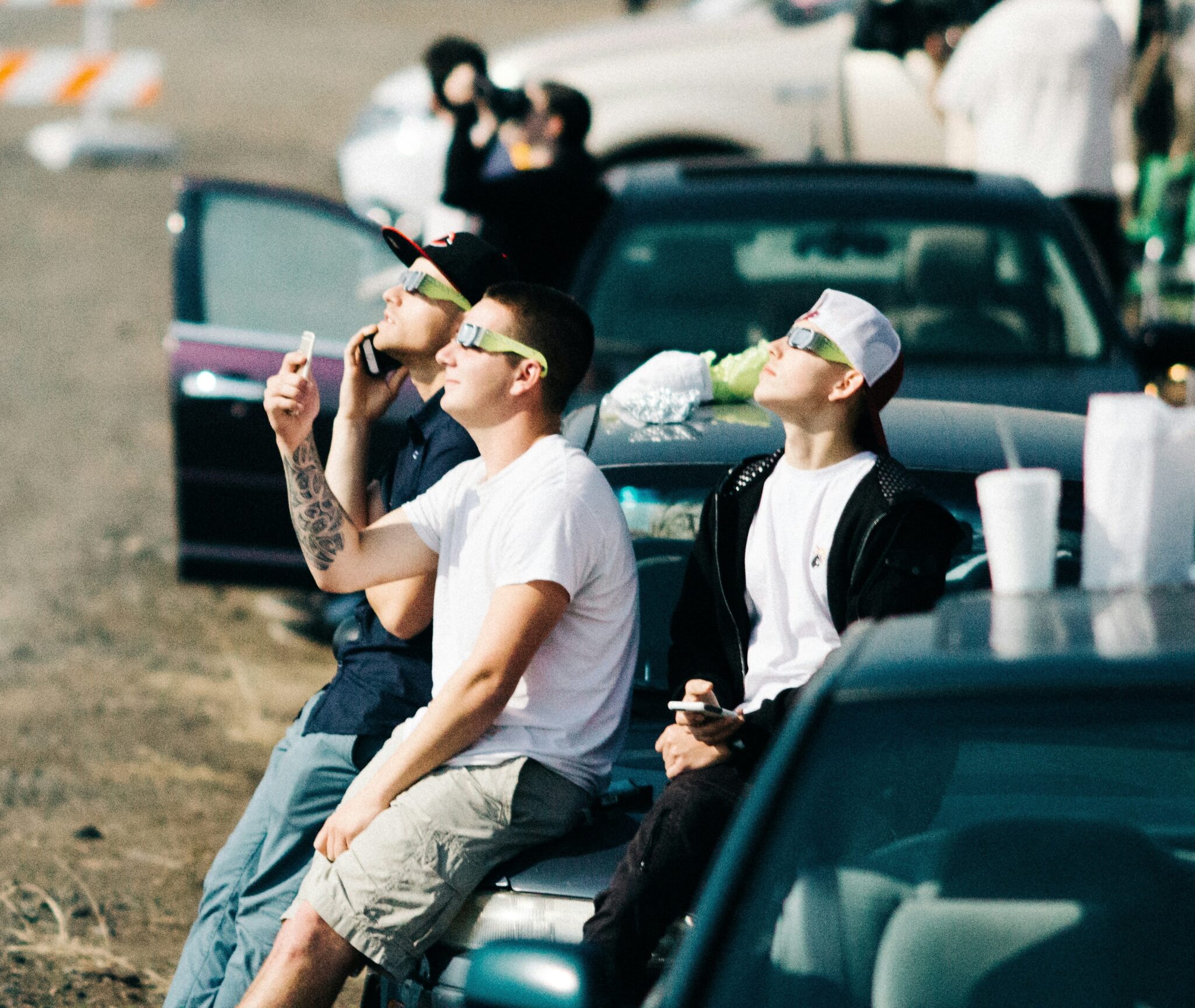The solar eclipse on April 8 attracted millions of observers across North America. Most of the eyewitnesses of the event watched the Moon cover the Sun with ordinary sunglasses with a dark filter, through which the overlap of the solar disk was noticeable. However, not all observers were aware of the hidden danger of using low-quality solar filters. A library in New Jersey publicly apologized when it found out that there were fake low-quality glasses for observing the solar eclipse, which it distributed to visitors.

In a Facebook post, the library noted that the glasses they received might be fake. It was noted that the sunscreen filters were purchased from the Walmart store chain, labeled as “approved by the American Astronomical Society.” However, it turned out that the batch could be a low-quality fake. This poses a threat to vision, since insufficient protection can lead to serious damage to the retina of the eye.
The library recommended avoiding the use of these glasses and apologized for the inconvenience caused. One of the commenters on Facebook admitted that he called the testing laboratory, but the cost of checking the safety glasses ranged from $1,200 to $1,500, so he decided to hope for the best.

It is difficult for consumers to distinguish fake glasses from real ones. In early March, the AAS Solar Eclipse Task Force issued a warning about the risk of counterfeiting some glasses mistakenly labeled as made by real manufacturers. In fact, they were low-quality and cheap filters from China. The Illinois Department of Public Health recalled certain models of eclipse glasses that were sold on Amazon and in retail stores.

After the end of the eclipse, many people began to complain of pain in their eyes. According to Google Trends, after Monday’s event, the number of requests on the topic of “my eyes hurt,” and, “why do my eyes hurt” has increased significantly.
According to AAS, after the 2017 solar eclipse, about 100 cases of eclipse-related retinopathy were reported in the United States and Canada.

Earlier, we reported on how to avoid damage to vision during the observation of a solar eclipse.
According to gizmodo.com
Follow us on Twitter to get the most interesting space news in time
https://twitter.com/ust_magazine


